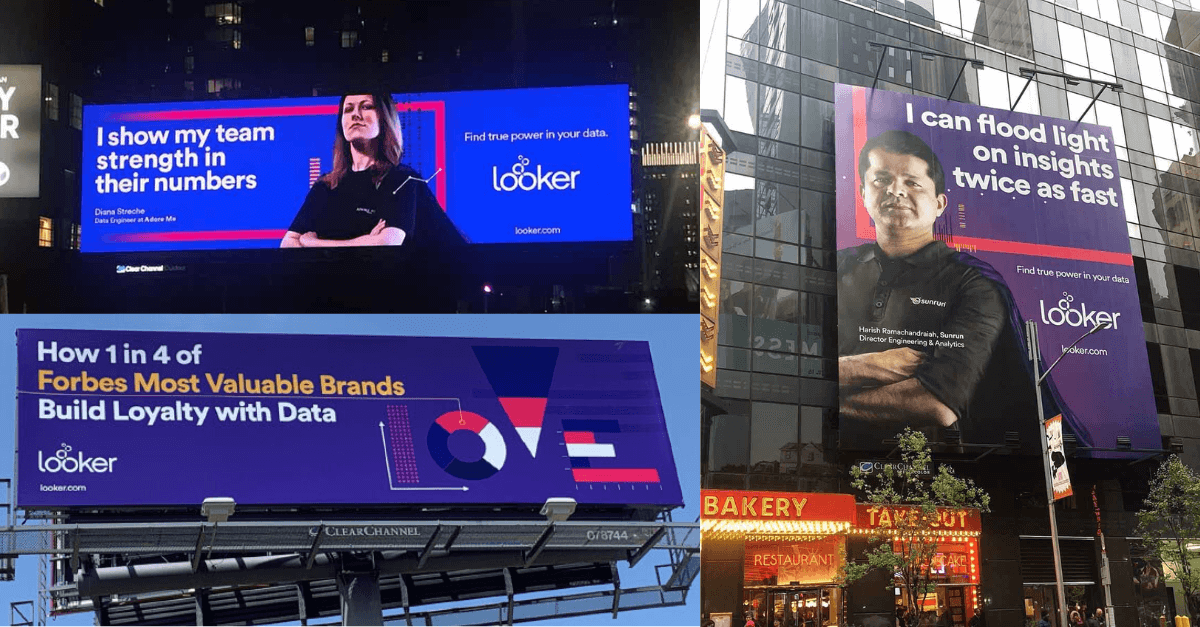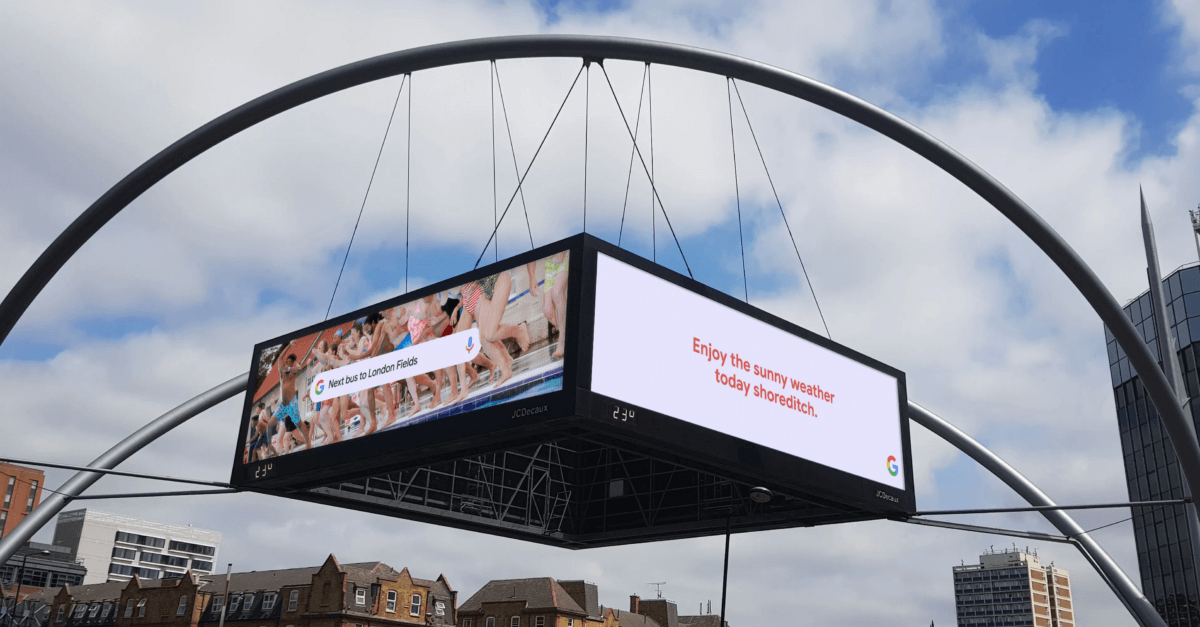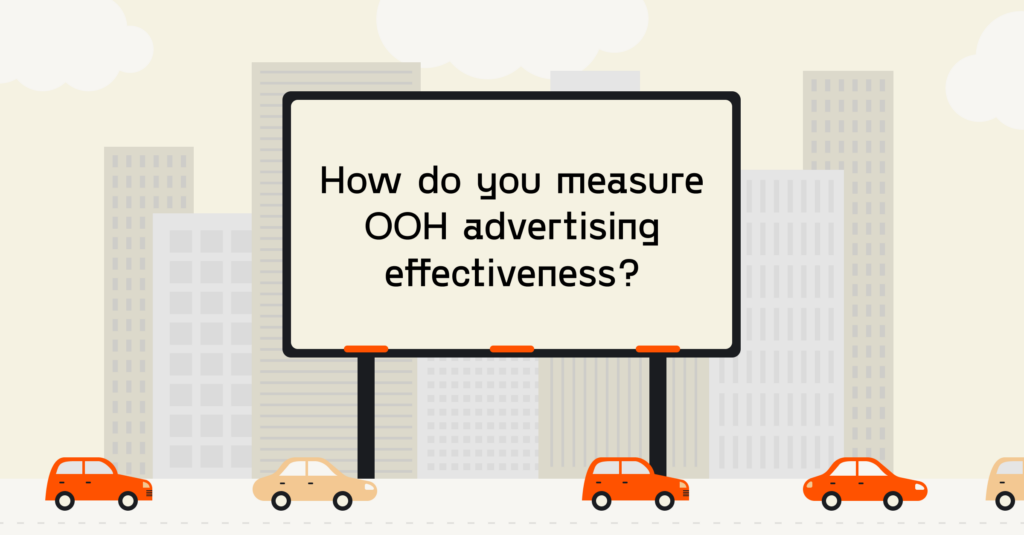What do billboards, bus stops, and other large-format ads have in common? They’re all part of out-of-home (OOH) advertising, a staple in the marketing world for decades. Even in our increasingly digital age, where online campaigns often take centre stage, OOH remains a powerful medium for capturing attention and building brand awareness. In fact, OOH advertising has risen by 5.1% in the last year, outshining other sectors of the advertising industry. This strong growth is expected to continue in 2024 and beyond.
However, a common challenge that many marketers face is understanding how to measure OOH advertising effectiveness. Unlike digital ads, where clicks, impressions, and conversions can be tracked in real-time, OOH doesn't offer the same immediate metrics. This has led to a perception that OOH's impact is intangible or difficult to quantify. But here's the truth: while measuring OOH advertising effectiveness can indeed be challenging, it's far from impossible.
In this blog, we'll explore the significance of OOH within the B2B and technology sectors. More importantly, we'll provide insights to help you accurately assess the outcomes of your OOH initiatives.
Relevance of OOH advertising in B2B
Although OOH advertising is traditionally associated with reaching mass consumer audiences, it is not limited to the B2C realm. In fact, it's proving to be a potent tool for targeting specific audiences within organisations. By strategically positioning their messages near business districts, tech hubs, and conference venues, B2B companies can capture the attention of their target audience right where they work and network.
Moreover, OOH provides a unique platform for B2B brands to convey complex solutions in a simplified manner. Through striking designs and succinct messaging, these brands can distil complex products or services into visuals that resonate with a wider audience. This capability is invaluable in the B2B realm, where products and services often demand a more profound understanding.

Photo credits to David Shearer
A prime example of this strategy in action is Looker, a data platform that revolutionises workflow optimisation. Looker leveraged OOH advertising to amplify their brand messaging. They deployed billboard ads of vibrant colours, in high-footfall locations such as airports, train stations, shopping centres, and high streets. These ads were strategically positioned in areas like departure lounges and atop escalators, places where prospects might pause, ensuring the message had the best chance of being absorbed. The content of these ads spotlighted their customers' successes and underscored the calibre of companies partnering with Looker.
This OOH-centric branding strategy played a pivotal role in Looker's ascent, culminating in its acquisition by tech giant Google. Today, Looker stands as a testament to the power of OOH advertising in the B2B space, now flourishing as an integral part of the Google Cloud Platform.
How OOH advertising is being leveraged for brand visibility and awareness
The strategic potential of OOH for B2B brands lies not just in its reach but also in its ability to craft memorable narratives that tell their stories in impactful ways. See below:
- Showcasing innovations: Tech companies, especially those in IT and workflow solutions, use OOH to highlight their latest innovations, products, or services.
- Building thought leadership: OOH can be used to promote whitepapers, research findings, or industry insights, positioning the company as a thought leader in its domain.
- Event promotion: Promotion of upcoming webinars, workshops, product launches, or participation in industry events and conferences.
- Integrating with digital: Modern OOH campaigns are often integrated with digital elements, such as QR codes, which lead to detailed product demos, case studies, or sign-up pages, bridging the gap between offline and online engagements.
- Case studies and testimonials: Leveraging real-world success stories and client testimonials in OOH campaigns can enhance credibility and trust among potential B2B clients.
- Engaging visuals: Increasing use of compelling visuals, infographics, and data visualisations in OOH campaigns to convey complex data in an easily digestible format.
Measuring OOH advertising: From traditional to digital metrics
In the ever-evolving landscape of advertising, measuring the success of OOH campaigns has undergone significant transformation. From traditional metrics that offered a broad overview to modern digital metrics that provide granular insights, the ways in which we gauge the effectiveness of OOH have expanded and refined.
Metrics for traditional OOH advertising
Traditional OOH advertising refers to static displays such as billboards, posters and transit ads. So historically, brands relied on ‘traditional’ metrics to determine the reach and influence of their OOH campaigns:
- Foot traffic: A direct way to measure the impact of an OOH advertisement, especially billboards or posters, is by assessing the increase in foot traffic to a physical location. Particularly relevant for businesses with brick-and-mortar operations, it provides a tangible measure of the advertisement's ability to drive potential customers or clients to a specific location.
- Sales uplift: This refers to the increase in sales directly attributable to the OOH campaign. This could translate to an increase in product demos, service inquiries, or actual sales following the launch of an OOH advertisement.
- Recall and recognition: While more qualitative, brand recall and recognition are vital indicators of an OOH campaign's success. Surveys or focus groups can be conducted to determine how many people remember seeing the advertisement and the specifics of the message it conveyed. High recall rates indicate that the advertisement was not only seen but also made a lasting impression on the audience.
However, while these metrics provide valuable insights, they often lack the depth and specificity needed to truly understand audience engagement and behaviour.
Metrics for digital OOH advertising
Enter the era of digital OOH. Out-of-home advertising using digital screens (e.g. LEDs and interactive kiosks) is referred to as digital OOH (DOOH) advertising and measuring their effectiveness require a different set of metrics than traditional OOH campaigns.
- Impression counting: This metric assesses the impact of the campaign based on the number of individuals who have seen the DOOH media. By understanding when and where an ad is displayed and identifying who is in the vicinity to see the ad, brands can get a clearer picture of their campaign's visibility.
- Attribution reporting: This involves tracking user behaviour and linking it to specific OOH ad placements. By using geolocation data, brands can monitor how many people who saw the ad later engaged with the brand, be it through visiting a physical location, browsing a website, or interacting with an app.
- QR code scans: A direct measure of engagement, this metric tracks the number of people who scanned a QR code on the OOH advertisement to learn more about the advertised product or service.
- Website traffic spikes: Brands can monitor increases in website visits following the launch of an OOH campaign. A significant uptick in traffic can indicate heightened interest and engagement due to the advertisement.
- Social media mentions: This metric tracks increased brand mentions, hashtags, or discussions on social platforms that can be attributed to the OOH campaign. An increase in social chatter can be a strong indicator of the campaign's reach and resonance with the audience.
Digital and OOH synergy for success
In today's interconnected world, it's imperative for brands to integrate their OOH metrics with digital analytics tools. This holistic approach not only offers a comprehensive view of campaign performance but also bridges the gap between offline advertising and online engagement.
By combining traditional metrics like foot traffic with modern digital insights, brands can truly grasp the broader impact of their OOH campaigns. From raising brand awareness to driving tangible conversions, this integrated perspective paints a vivid picture of OOH's influence on audience behaviour.
Look at how Google embraces both formats.
Google’s dynamic approach to DOOH advertising
Google's 'Make the most of summer' digital OOH campaign, launched in the UK, stands as a testament to the evolving landscape of OOH advertising in the digital age. The campaign seamlessly integrated real-time data to offer contextually relevant information, promoting various Google products. Whether suggesting indoor activities on a rainy-day using Google Search or highlighting nearby attractions with Google Maps, the campaign showcased the power of real-time data in OOH advertising.

Image source: OOH Today
This campaign exemplifies modern metrics in action. The use of QR codes to direct audiences to specific Google searches, tracking website traffic spikes, and monitoring social media mentions provided a comprehensive view of the campaign's success. Moreover, the campaign's adaptability based on real-time data highlights the significance of merging OOH with digital analytics tools.
This approach emphasises the importance of tailoring content and integrating various digital tools for a cohesive user experience, especially in B2B. The potential of OOH advertising in today’s digital realm is endless. Like Google, you can leverage real-time data, personalisation, and digital integration to craft impactful OOH campaigns that resonate with your audience.
Interested in exploring the innovative intersection of augmented reality (AR) and OOH advertising? Our recent blog post delves into the transformative potential of this combination. Read here.
Putting the “Ooh..” in OOH
Measuring the effectiveness of OOH advertising, especially in the B2B and tech sectors, requires a blend of traditional insights and modern digital metrics. As we've explored, the landscape of OOH advertising is evolving, and businesses must adapt to harness its full potential.
Fifty Five and Five excels in bridging this gap by crafting compelling content, optimising your online presence, and designing impactful visuals. Our expertise ensures that your OOH campaigns seamlessly integrate with the digital world, offering a cohesive brand experience. Let's collaborate to make your OOH campaigns resonate and drive measurable results. Get in touch now!
Billboard your way to success!
Looking to make a towering impact with your advertising? Fifty Five and Five can help you take your campaigns from background noise to centre stage. Get in touch with us today to discuss how we can make that happen.

